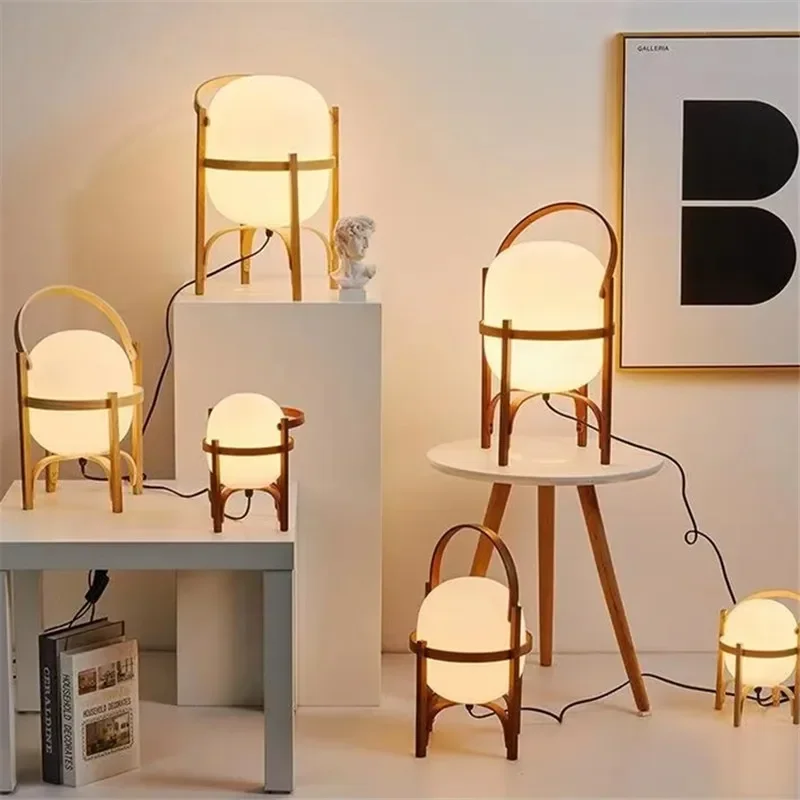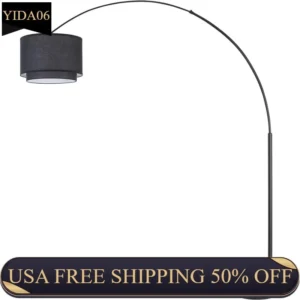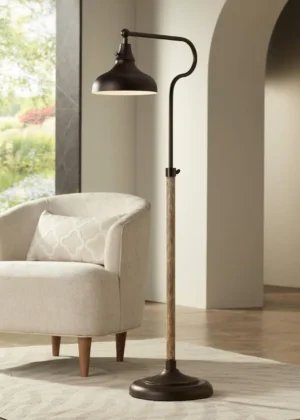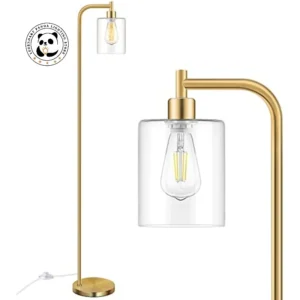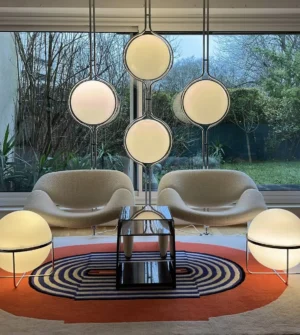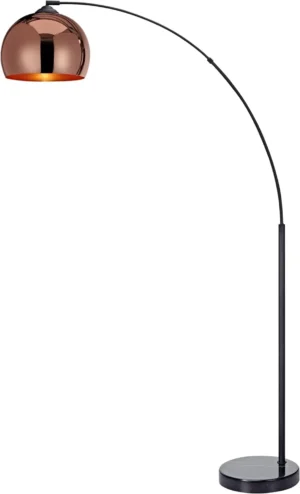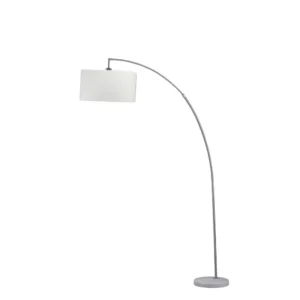Introduction: The Art of Styling Large Floor Lamps in Interior Design
Floor lamps are much more than just sources of light—they’re powerful design elements that can transform the look and feel of any room. Standing tall and commanding attention, large floor lamps serve a dual purpose: they provide essential illumination while simultaneously acting as statement pieces that enhance your décor.
When thoughtfully styled, a well-chosen floor lamp can completely alter the atmosphere of a space, creating warmth, adding visual interest, or establishing a focal point. The impact goes beyond mere brightness—it’s about creating an experience through light and design.
From the dramatic sweep of an oversized arc floor lamp to the architectural presence of a tripod design, these lighting fixtures have shaped interior design for decades. Their ability to combine form and function makes them indispensable tools in creating well-designed spaces.
This guide explores various approaches to styling your large floor lamps, from strategic placement and scale considerations to creative styling techniques that maximize their visual impact. Whether you’re looking to illuminate a reading nook or create a stunning focal point, the right styling approach can elevate both your lamp and your entire living space.
Understanding Large Floor Lamp Types and Their Styling Potential
Arc Lamps
With their sweeping curves and dramatic silhouettes, arc lamps create overhead illumination without the need for ceiling fixtures. Their distinctive shape makes them perfect for placement over dining tables, sectional sofas, or conversation areas. The curved arm allows light to be directed exactly where needed while adding an architectural element to the room.
Torchiere Lamps
These upward-facing lamps direct light toward the ceiling, creating soft, ambient illumination that bounces back into the room. Torchieres work wonderfully in corners or alongside larger furniture pieces where they can provide general lighting without harsh glare. Their vertical design makes them ideal for smaller spaces that need height without bulk.
Tripod Lamps
Standing on three legs, tripod lamps offer exceptional stability along with distinct architectural interest. Their sturdy, often mid-century inspired design makes them perfect as statement pieces in living rooms or home offices. The triangular base creates visual intrigue while providing balanced support.
Column/Traditional Lamps
With their classic silhouettes and straightforward designs, column lamps offer timeless appeal that works in virtually any décor style. These versatile options can blend seamlessly into traditional settings or provide contrast in more contemporary spaces.
Swing-Arm and Adjustable Lamps
Featuring movable components, these highly functional lamps allow for customized lighting. The adjustable nature of big arc floor lamps makes them perfect for reading nooks, craft areas, or anywhere that requires directed light that can be repositioned as needed.
Each lamp type creates different spatial relationships within a room—some draw the eye upward, others outward, while some create intimate pools of light. Understanding these inherent qualities helps you select the right style for your specific space and lighting needs. For spaces requiring flexibility, adjustable arc floor lamps offer versatile lighting solutions that can adapt to changing needs.
Shade Selection: How Shape and Material Transform Light Quality
The shade of your floor lamp significantly influences both its appearance and the quality of light it produces. Making thoughtful selections can dramatically transform your lamp’s impact:
Shade Shapes and Their Effects
Drum shades: These cylindrical shades provide even, moderate light dispersion with a contemporary appeal. Their clean lines work well in modern interiors while offering balanced illumination.
Empire shades: With their wider bottom edge, these traditional shades direct more light downward, creating focused illumination for reading or tasks while maintaining a classic aesthetic.
Bell shades: These curved, flared shapes create softer, more diffused ambient lighting that feels gentle and inviting—perfect for creating a warm atmosphere.
Angular/geometric shades: Modern and distinctive, these create defined light patterns and strong visual interest, making them ideal for contemporary or artistic spaces.
Material Considerations
Fabric options: Linen provides texture and warmth while filtering light gently; cotton offers durability with moderate diffusion; silk creates a luxurious glow with elegant texture.
Paper: Creates gentle, ethereal light diffusion perfect for creating soft ambient lighting with a natural feel.
Metal: Directs light in specific patterns, often downward, creating dramatic shadows and concentrated illumination.
Glass: Allows clearer, brighter illumination with possibilities ranging from crystal clear to frosted for different effects.
The right combination of shape and material can dramatically affect your room’s ambiance—frosted glass in a geometric shape creates modern minimalism, while a silk empire shade evokes traditional elegance. Understanding these elements helps you select a lamp that not only looks beautiful but also provides the right shade for your lighting needs.
Strategic Placement: Where to Position Your Floor Lamp
Where you place your floor lamp can completely transform both its impact and the room’s functionality. Consider these strategic placement options:
Create dedicated reading or task zones by positioning lamps slightly behind and to the side of seating. This placement prevents glare while providing focused light exactly where needed for reading, crafting, or other activities requiring good visibility.
Brighten dark corners to eliminate unused dead spaces and add depth to your room. A floor lamp can instantly activate an otherwise neglected area, making your space feel larger and more intentionally designed.
Use lamps as subtle room dividers in open concept spaces. An arc lamp or substantial floor lamp can visually separate distinct functional areas without blocking sightlines or making the space feel closed off.
Position behind seating for indirect ambient glow. This creates a beautiful backlight effect that adds dimension while preventing harsh direct light.
Companion to artwork or architectural features. Placing a lamp near artwork, a fireplace, or other focal points can enhance these features while creating a cohesive design grouping.
Frame entryways and transitions with a welcoming light that guides movement between spaces. A well-placed lamp can signal the beginning of a new zone or highlight a transition area.
Flank large furniture pieces like sofas or beds with matching or complementary lamps for balanced composition that feels intentional and complete.
Create strategic triangulation with other light sources, ensuring even illumination throughout the room. This layered approach eliminates harsh shadows and creates visual harmony.
Understanding where to place arc floor lamps specifically can transform your space, while learning about big floor lamp placement helps you make the most of larger statement pieces.
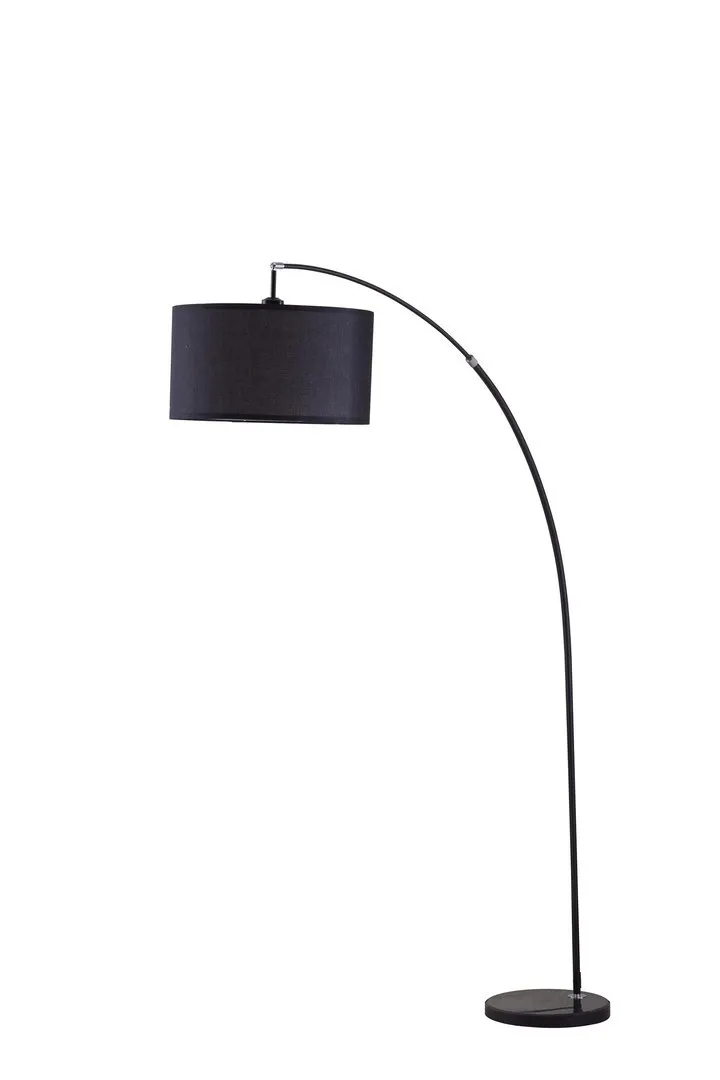
Scale and Proportion: Matching Lamp Size to Your Space
Getting the scale right is crucial when styling a large floor lamp. A perfectly proportioned lamp enhances your space, while one that’s too large or small can disrupt the visual balance.
Room size serves as your primary guide—larger rooms can accommodate taller, more substantial lamps, while smaller spaces generally benefit from more streamlined designs. As a general rule, the lamp height should harmonize with your ceiling height. For standard 8-foot ceilings, lamps around 60-72 inches tall work well. For higher ceilings, taller lamps help maintain visual balance by filling the vertical space.
When positioning lamps near furniture, consider relative heights. Ideally, the bottom of a lampshade should sit at approximately eye level when you’re seated nearby, making it perfect for reading or conversation. For lamps placed beside sofas or chairs, the height should complement, not overwhelm, the furniture.
Common sizing mistakes include selecting lamps that are too short (creating a disconnected feeling between furniture and lighting) or too imposing for the surrounding elements. However, occasionally, an intentionally oversized lamp can serve as a dramatic focal point—just ensure the room can handle the visual weight.
The shape matters as much as height. In tight quarters, opt for lamps with slimmer profiles and smaller bases. For expansive spaces, more substantial designs prevent the lamp from looking insignificant in the room. Finding the perfect arc floor lamp height makes a significant difference in how the piece integrates with your space, while oversized arched floor lamps can make intentional statements in rooms with adequate space.
Creating Stylistic Harmony with Your Existing Decor
To integrate your floor lamp seamlessly into your space, start by identifying your predominant interior style. Is your home modern, traditional, industrial, bohemian, or perhaps an eclectic mix? This foundation helps guide your lamp selection toward either complementary harmony or intentional contrast.
For cohesive integration:
Match materials and finishes to elements already present in your room. A brass lamp base can echo picture frames or hardware, while wood tones can complement existing furniture.
Consider color coordination strategies:
- Neutral-colored lamps (white, beige, black) offer maximum versatility and longevity
- Statement colors work when they pull from your existing color scheme
Metallics function as “new neutrals” that add sophistication without competing with other colors
Respect the design language of your space—clean lines for modern interiors, ornate details for traditional settings, raw materials for industrial spaces.
Sometimes, intentional contrast creates the most interesting design moments. A sleek, contemporary lamp can add freshness to a traditional room, while a vintage-inspired piece might add character to minimalist décor. The key is ensuring the contrast feels purposeful rather than accidental.
Floor lamps can also serve as transitional pieces that help blend different styles within a space. For instance, a lamp with both modern and traditional elements can bridge diverse furniture pieces in an eclectic room.
Oversized arc lamps can transform your space by adding architectural interest while providing functional light. For spaces with contemporary aesthetics, contemporary arc floor lamps offer clean lines and modern silhouettes that enhance your existing décor.
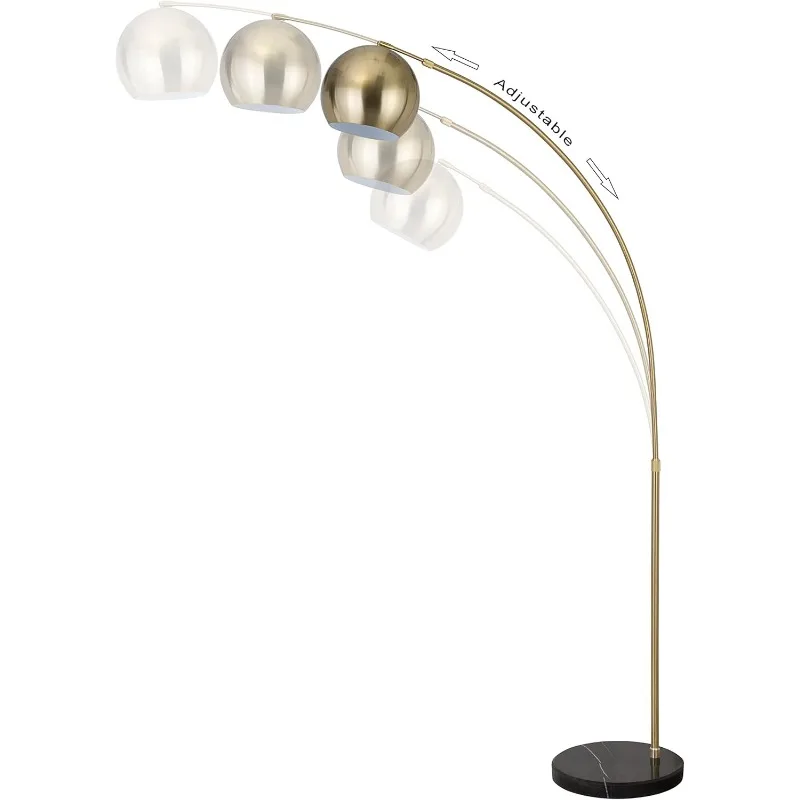
Layering Light: Incorporating Floor Lamps in Your Overall Lighting Scheme
Creating a well-designed lighting scheme involves thoughtfully layering different light sources to create depth, dimension, and functionality. Floor lamps play a crucial role in this layered approach:
Understanding the three essential lighting layers helps you position floor lamps effectively:
Ambient lighting provides overall illumination for the room (typically ceiling fixtures or torchiere floor lamps that direct light upward).
Task lighting delivers focused illumination for specific activities like reading, working, or cooking (adjustable floor lamps excel here).
Accent lighting highlights architectural features, artwork, or decorative objects (directional floor lamps can serve this purpose beautifully).
Floor lamps are uniquely versatile because they can fulfill any of these roles depending on their design and placement. A torchiere contributes to ambient lighting, an adjustable reading lamp provides task lighting, while a spotlight floor lamp can accent artwork or plants.
To create a balanced scheme, consider how your floor lamp interacts with natural light sources throughout the day. Position lamps to supplement daylight and provide continuity as natural light fades. Also, coordinate your floor lamp with other fixtures—ceiling lights, wall sconces, and table lamps—ensuring varied heights for dimensional interest.
Creating distinct lighting zones allows different activities to occur simultaneously within the same space. A reading corner might benefit from a focused floor lamp, while ambient lighting serves conversation areas nearby.
For maximum flexibility, dimmable arc floor lamps allow you to adjust brightness levels throughout the day, adapting to changing needs and creating different moods within the same space.
Contemporary Arc Floor Lamp, Large Arc Floor Lamp, Oversized Arched Floor Lamp
$460.63 Select options This product has multiple variants. The options may be chosen on the product pageAdjustable Arc Floor Lamp, Bronze Arc Floor Lamp
Price range: $440.95 through $558.52 Select options This product has multiple variants. The options may be chosen on the product pageBrass Arc Floor Lamp, Contemporary Arc Floor Lamp, LED Arc Floor Lamp
Price range: $490.72 through $522.04 Select options This product has multiple variants. The options may be chosen on the product pageChrome Arc Floor Lamp, LED Arc Floor Lamp
Price range: $304.95 through $1,210.40 Select options This product has multiple variants. The options may be chosen on the product pageContemporary Arc Floor Lamp, Large Arc Floor Lamp, Marble Base Arc Floor Lamp
$224.94 Select options This product has multiple variants. The options may be chosen on the product pageContemporary Arc Floor Lamp, Silver Arc Floor Lamp
$459.99 Select options This product has multiple variants. The options may be chosen on the product page
Advanced Styling Techniques for Design Enthusiasts
Once you’ve mastered the basics of floor lamp placement and selection, these advanced styling techniques can elevate your lighting design to professional levels:
Create asymmetrical balance by intentionally offsetting your floor lamp with furniture or art of similar visual weight. This creates dynamic tension that feels sophisticated and intentional, rather than simply placing matched pairs of items.
Use pairs of matching lamps for formal symmetry in traditional settings or when framing architectural features like fireplaces or entryways. The repetition creates rhythm and emphasizes the importance of what’s between them.
Style the area around the lamp base with thoughtfully curated accessories. Small plant groupings, stacked books, or sculptural objects create a vignette that makes the lamp part of a complete design story rather than an isolated piece.
Explore creative alternative lampshades beyond standard options. Consider custom or handcrafted shades in unique materials, unexpected shapes, or even repurposed items that filter light in interesting ways.
Mix vintage lamps with contemporary interiors (or vice versa) to create engaging visual contrast. The tension between old and new creates depth and personality that perfectly matched items can’t achieve.
Make seasonal adjustments to refresh your lamp styling. Swap lampshades seasonally, rearrange the lamp’s position, or change surrounding decorative elements to keep your space feeling current.
Use lamps to direct visual flow through a room by creating lighting pathways that guide the eye naturally from one area to another, helping establish a visual hierarchy within the space.
Using large arc lamps as focal points can anchor your design scheme, while modern arc floor lamps provide contemporary silhouettes that work beautifully with these advanced styling approaches.
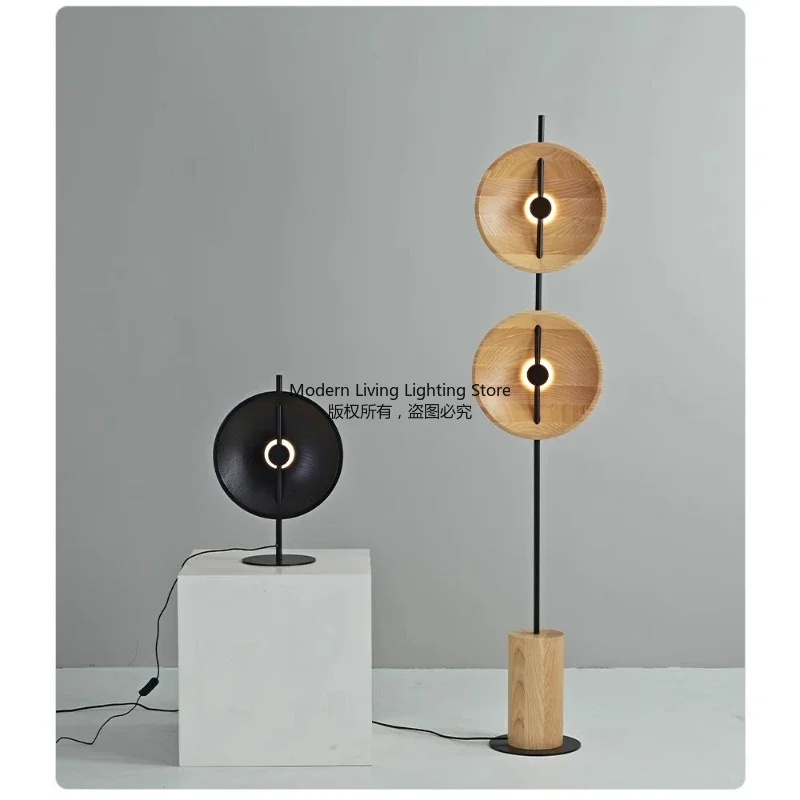
Functional Considerations: Practical Aspects of Floor Lamp Styling
While aesthetics are important, practical considerations ensure your beautifully styled floor lamp functions effectively in daily life:
Managing Cords and Cables
Q: How do I handle unsightly lamp cords?
A: Route cords along furniture edges, use cord covers in coordinating colors, or explore cord management solutions like clips or channels that secure cords against baseboards. Learning how to hide arc floor lamp cords specifically can keep your statement piece looking clean and intentional.
Electrical Placement
Q: What if my ideal lamp location is far from an outlet?
A: Consider lamp placement during your initial planning phase, choosing locations with convenient outlet access. For greater flexibility, high-quality extension cords designed for permanent use can be concealed along walls or under rugs specifically designed with cord channels.
Safety Considerations
Q: How do I make floor lamps safe with children or pets?
A: Choose lamps with sturdy, weighted bases that resist tipping. Position lamps away from high-traffic pathways and secure cords to prevent tripping. For homes with active children or pets, consider lamps with break-resistant materials and rounded edges.
Bulb Selection
Q: What bulbs create the right lighting effect?
A: Consider three key factors:
– Color temperature: Warm white (2700-3000K) creates cozy, inviting environments; cool white (3500-4100K) provides clearer task lighting; daylight bulbs (5000-6500K) offer the brightest, bluest light.
– Brightness: Measure in lumens, not watts—800 lumens provides good general lighting; 1100+ lumens for reading tasks.
– Energy efficiency: LED arc floor lamps offer excellent longevity and lower energy consumption while generating less heat.
Smart Integration
Q: Can I make my floor lamp “smarter”?
A: Consider smart bulbs or plug-in switches that enable remote control, scheduling, and even color changes through smartphone apps or voice commands. These additions preserve your lamp’s aesthetic while enhancing functionality.
Space Planning
Q: How much clearance does a floor lamp need?
A: Allow at least 18-24 inches between the lamp and any frequently used pathways to prevent accidental collisions. For arc lamps, ensure adequate height clearance under the arc for movement without ducking.
Styling Floor Lamps in Different Rooms
Each room presents unique opportunities for floor lamp styling:
Bedroom
- Position beside nightstands to free up surface space while providing directional reading light
- Use softer, diffused light sources that create a calming pre-sleep environment
- Consider adjustable options that can direct light for reading without disturbing partners
Home Office
- Place task-oriented lamps to the side of workspaces to minimize screen glare
- Choose lamps with adjustable components for directing light precisely where needed
- Consider color temperature that supports focus and reduces eye fatigue
Living Room
- Use floor lamps to anchor conversation areas and define seating arrangements
- Position arc lamps to provide overhead lighting for central seating without ceiling fixtures
- Layer with other light sources to create a warm, inviting atmosphere with depth
Dining Areas
- Add supplemental lighting near sideboards or serving areas
- Choose styles that complement but don’t compete with dining table lighting
- Consider slimmer profiles that won’t interfere with movement around the table
Small Spaces
- Select lamps with built-in storage or shelving for multifunctional benefits
- Choose designs with translucent or open elements that won’t visually weigh down the space
- Consider wall-mounted swing-arm lamps that provide floor lamp benefits without the footprint
Styling large arc lamps in open spaces requires special attention to scale and proportion to ensure these statement pieces enhance rather than overwhelm your space.
Can Floor Lamps Work in Minimal or Small Spaces?
Yes! Floor lamps can actually be ideal lighting solutions for smaller spaces when selected thoughtfully. Look for designs with slim profiles, minimal footprints, and visual lightness. Lamps with transparent or open components—like metal frames without solid shades—maintain light flow through the space while providing illumination.
Visual tricks can make substantial lamps work in compact areas: models with clear glass, acrylic components, or reflective metallic finishes appear lighter and less imposing. Height becomes your ally in small spaces—taller, slimmer lamps draw the eye upward, creating the perception of higher ceilings and more space.
For truly compact areas, consider multi-functional options like floor lamps with integrated shelving, USB charging ports, or small tables—these provide lighting while eliminating the need for additional furniture pieces. The key is finding balance between substantial enough to be functional but streamlined enough to complement smaller dimensions.
Minimalist arc floor lamps offer clean lines and unobtrusive profiles perfect for compact living without sacrificing style or functionality.
What’s the Best Way to Update Older Floor Lamps?
Refreshing existing floor lamps is a sustainable and budget-friendly alternative to buying new. The simplest transformation comes from shade replacement—swapping in a new shape, size, or material can completely reinvent your lamp’s look and light quality.
For the base and stand, consider refinishing options like spray painting metallic finishes (brass, copper, matte black), applying wood stains to refresh timber components, or even creative treatments like color-blocking or ombré effects for contemporary appeal.
Hardware updates—new switches, pulls, or finials—offer subtle yet impactful changes. When working with vintage lamps, determine which elements contribute to its character (often the silhouette or unique details) and preserve these while updating more generic components.
Modern LED bulbs can significantly improve an older lamp’s performance, providing better light quality, energy efficiency, and longer life while maintaining vintage character. The most successful updates honor the lamp’s original design integrity while refreshing elements that date or diminish it.
For inspiration, browse vintage arc floor lamps to understand which characteristics give period lighting its distinctive appeal.
How Do You Choose Between Floor and Table Lamps?
The floor versus table lamp decision depends on several key factors:
Space availability often drives the initial choice. Floor lamps require floor space but free up valuable surface area on tables and consoles. In contrast, table lamps need dedicated surface space but don’t take up floor real estate.
Light height and distribution differ significantly between these options. Floor lamps provide illumination from higher points, casting light over broader areas and reducing glare for tasks like reading. Table lamps create more intimate pools of light at lower heights, often serving as secondary lighting sources.
Visual weight plays an important role in room balance. Floor lamps add vertical interest and can help draw the eye upward in rooms with lower ceilings. Table lamps create mid-level focal points and often contribute more to the room’s color scheme through their more visible shades.
Many well-designed spaces use both types in complementary arrangements, with floor lamps providing general or task lighting while table lamps contribute to atmosphere and middle-height visual interest. Consider your specific needs—reading, ambient lighting, or accent illumination—and the available space when making your selection.
For larger spaces requiring significant illumination, design tips for oversized floor lamps can help you make these substantial pieces work effectively in your interior design scheme.
Interior Ivy’s collection features lamps specifically designed to make a significant impact in various settings while providing exceptional illumination quality, helping you find the perfect balance of form and function for your specific space.

